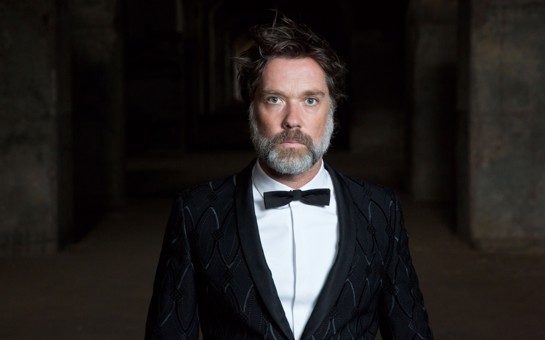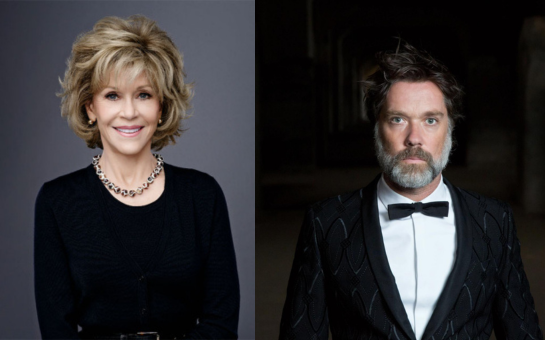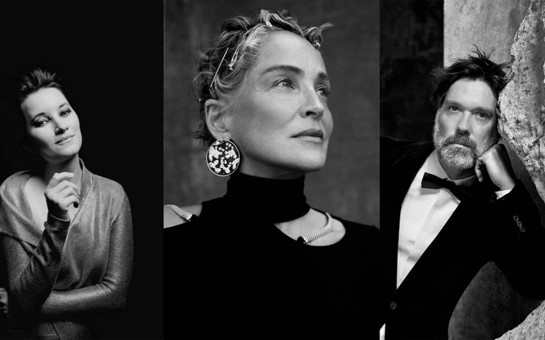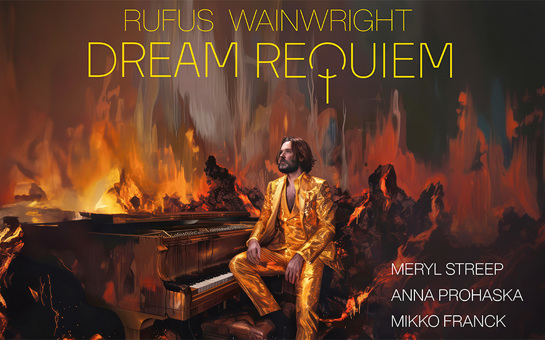- Rufus Wainwright
Dream Requiem (2023)
- Chester Music Ltd (World)
Commissioned by Radio France, The Royal Ballet, the Los Angeles Master Chorale, Palau de la Musica Catalana Barcelona, Auditori de Barcelona, the RTÉ Concert Orchestra, Helsinki Festival, the Helsinki Philharmonic Orchestra and the Netherlands Philharmonic Orchestra. World Premiere presented by Orchestra Philharmonique du Radio France, conducted by Mikko Franck on 14 June 2024.
Commissioner exclusivity applies
Unavailable for performance.
- actor,S + SATB; 3(III:pic).3(III:ca).3(III:bcl).3(III:cbn)/4.3.3.1/2timp.4perc/hp/str
- SATB and Children's Choir
- Narrator, Soprano
- 1 hr 5 min
- Lord Byron and tbc
- 22nd August 2025, Elbphilharmonie, Hamburg, Germany
- 23rd August 2025, Elbphilharmonie, Hamburg, Germany
Programme Note
1st part
Dream Requiem is the amalgamation of two musical and creative ideas that have been developing side by side for a long time and brought together singularly dramatic experience of the Covid 19 pandemic shutting down the world.
Rufus' fascination with the form of the Requiem has been going back to early teenage days where he heard Giuseppe Verdi's Requiem for the first time and was transformed as a human being and shown an artistic path that he could follow into his future. He used opera as his secret weapon in his pop music and later wrote two operas, Prima Donna and Hadrian.
To write a Requiem during the time of Covid seemed like a very challenging but at the same time incredibly appropriate idea. A Requiem for the people we have lost in this crisis, for the past from which we are cut off and for the future which we do not yet know how to connect to, a Requiem for the human touch, togetherness and the human voice which all had become dangerous and contagious during the pandemic.
Part 2
Rufus has been drawn for a long to Byron's poem "Darkness" which describes in vivid words the end of the world after the 1815 volcano eruption of Mount Tambora on the island of Sumbawa in Indonesia darkened the skies or weeks on end. It is to this day the most violent volcanic eruption in recorded history. The ash from the eruption column dispersed around the world and lowered the temperature worldwide. 1815 is also known as the “Year without a Summer”. Byron’s poem is a powerful vision of environmental and political collapse. Apocalyptic times were always the fuel for revolutions and great social shifts and change. “Darkness” seems to be almost the invisible foundation for the urge to change and overthrow a broken system. Byron's poem starts with the line "I had a dream" and ends with "She is the Universe". The dark side leads to the necessity of social change.
Listening to Verdi’s Requiem as a child turned Wainwright onto opera. He describes his love for classical music and opera in particular the “secret” ingredient that turned his folk roots into his trademark baroque pop sound. The idea to write a requiem has been in the back of his mind for a long time and surfaced powerfully in recent times. His song “Agnus Dei” on his album
“Want Two” speaks of this idea and obsession.
3rd part
Thinking about both the Byron piece and the Requiem for a long time it became obvious that it would make a lot of sense to combine both similar to what Britten did with his War Requiem interweaving texts by the English war poet Edward Owen with the Latin mass text. We are facing a huge political and environmental crisis and yet are not sure how to emerge from it. Something is dying or is already dead and before moving on and turning a catastrophe into hope and change, we must mourn what we have lost and properly send it off. Sadly writing a Requiem of course takes on many more meanings as the process unfolds. The War in Ukraine, the earth quake victims in Turkey and Syria are some of these events that have since shaped humanities need for mourning and created unfathomable tragedies for so many. The Requiem honors and celebrates what we have lost. We have lost the dream and we need to shed the nightmares.
Both texts will be interwoven in the composition but are treated in distinctly different manner. Byron’s text will mostly be narrated by an actor and is underscored by very dark dirge-like orchestral arrangements demonstrating the brutality, impact, and sheer force of the apocalyptic images that the poem conjures. The Latin Requiem text is sung by a large mixed choir and a soprano solo. Massive choral moments are interrupted by quieter soprano solo passages to underline the fragility of life and nature, the solitude around death and the experience of loss, the loneliness and isolation that we find ourselves in today, devoid of touch and community. Nonetheless Wainwright intends to overcome in his music the desolation and tragedy of death and give rise to hope and beauty through the music.
Jorn Weisbrodt
Dream Requiem is commissioned by
Radio France for the Orchestra Philharmonique of Radio France, The LA Master Chorale, The Royal Ballet Covent Garden, The RTE Orchestra, Palau de la Música Catalana, Helsinki Philharmonic Orchestra.
For further information about Dream Requiem please contact gill.graham@wisemusic.com
Reviews
More Info

- ‘Dream Requiem’ by Rufus Wainwright in Amsterdam and Hamburg
- 14th June 2025
- On June 22, the Dutch premiere of Dream Requiem by Rufus Wainwright takes place at the Concertgebouw Amsterdam.

- U.S. Premiere of Wainwright's Dream Requiem at Walt Disney Concert Hall
- 30th April 2025
- The U.S. premiere of Dream Requiem, a deeply personal and powerful work by Rufus Wainwright, takes place at the Walt Disney Concert Hall on May 4, 2025.

- Dream Requiem in Spain, USA and Holland
- 20th January 2025
- Over the next two years, Rufus Wainwright's Dream Requiem will be performed at major international venues including Barcelona, Los Angeles and Amsterdam.

- Rufus Wainwright's Dream Requiem recording out now
- 17th January 2025
- The World Premiere recording of Rufus Wainwright's Dream Requiem featuring Meryl Streep as narrator is released on Warner Classics today.
-news.jpg)
- Rufus Wainwright’s Dream Requiem premiere with narration by Meryl Streep
- 13th June 2024
- Rufus Wainwright’s Dream Requiem with Meryl Streep and Anna Prohaska

 Located in the UK
Located in the UK
 Located in the USA
Located in the USA
 Located in Europe
Located in Europe